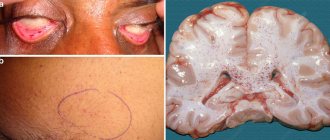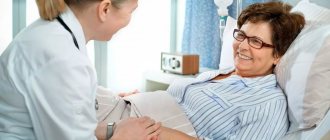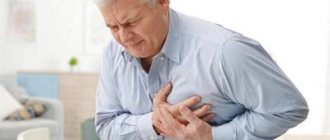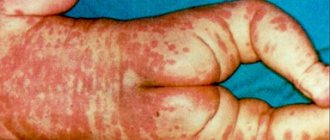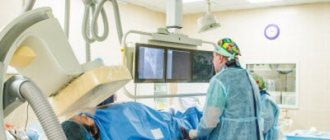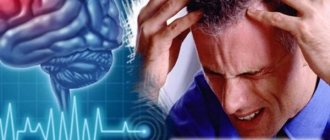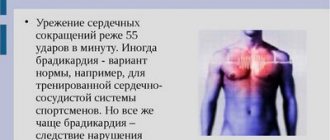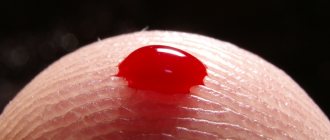A microstroke in men is associated with thrombosis or spasm of small vessels in the brain. This pathology differs from other circulatory disorders in that it leads to the death of neurons and the formation of a focus of necrosis.
An attack of a micro-stroke is a loud signal from the body that it is necessary to see a doctor as soon as possible and check your health. The statistics are disappointing: those who do not seek help soon experience new attacks or develop a full-blown stroke.
The insidiousness of a micro-stroke lies in its transience. Symptoms rarely last longer than 24 hours, and men tend not to pay much attention to them. Even if a person subsequently undergoes a routine examination by a doctor, the latter may miss critically important symptoms.
The staff of the Yusupov Hospital includes candidates and doctors of medical sciences, doctors of the highest category. Extensive practical experience in the field of diseases of the central nervous system allows us to work with patients with microstroke at any stage: diagnosis, treatment, rehabilitation or prevention of cerebrovascular accidents in the future.
The difference between a stroke and a microstroke
In some sources, a microstroke is otherwise called a transient cerebrovascular accident. A transient - in other words, a temporary disturbance - passes within a day and is more like overwork and the consequences of a stressful state. During a micro-stroke, a small number of brain structures undergo necrosis, and the consequences of this may not be immediately noticeable. However, with a full-blown stroke, many more brain structures die, which seriously affects the quality of life.
The signs of stroke and micro-stroke in men are similar, the difference is that with a micro-stroke they go away much faster. It is for this reason that men often do not receive the necessary treatment on time and experience relapses.
Expert opinion
Author: Andrey Igorevich Volkov
Neurologist, Candidate of Medical Sciences
A microstroke, in accordance with medical terminology, is usually called a minor stroke. It is characterized by the same clinical picture as a major stroke. Signs include headache, inability to follow simple directions, loss of sensation in extremities, inability to smile, stick out tongue, and slurred speech. The difference between a minor stroke is that the neurological damage is reversible. The volume of the lesion is assessed using the NIHSS scale.
Clinical manifestations disappear within 24 hours, but do not completely affect the blood vessels of the brain. With microstrokes, necrosis of a very small area of the brain is possible, which can only be diagnosed based on the results of MRI and computed angiography. These types of diagnostics are available at the Yusupov Hospital.
At the first symptoms, it is important to get into the “therapeutic window” (4 hours). When starting therapy during this period, according to research, treatment is most effective. In this case, the zone of brain necrosis is limited to a small area.
Among the first measures: intravenous thrombolytic therapy, support of oxygenation of brain tissue, blood pressure monitoring, heart rate correction, prevention of tongue retraction and the formation of bedsores.
Causes of microstroke in men
The cause of microstroke in men is chronic diseases. These include cerebral atherosclerosis, in which cholesterol plaques form in the blood vessels of the brain. They clog arteries, causing some brain tissue to not receive adequate blood supply.
Arterial hypertension is another reason. If it is accompanied by sudden changes in blood pressure, this can negatively affect the condition of the blood vessels and cause their spasm.
Doctors also warn that the following factors can lead to the disease:
- arrhythmia;
- diabetes;
- obesity.
Additional risk factors are bad habits: smoking, alcohol abuse. A sedentary lifestyle and addiction to high-calorie, fatty foods also negatively affect the condition of blood vessels and the body as a whole.
What are the causes, symptoms, consequences of this phenomenon?
The causes of TIA are atherosclerotic damage to the arteries, arterial hypertension, heart disease, diabetes mellitus, etc. The above reasons account for approximately 95% of TIAs and are dominant in elderly and senile people. In approximately 5% of cases, more often in young people.
TIAs are caused by other reasons:
- arterial dissection;
- vasculitis, congenital anomalies of the arteries;
- migraine;
- hematological disorders;
- infections;
- malignant neoplasms;
- oral contraceptives;
- pregnancy and postpartum period;
- pathological tortuosity of blood vessels;
- extravasal compression of the vertebral arteries by pathologically altered cervical vertebrae.
It should be noted that TIA is characterized by a sudden onset and rapid regression of symptoms, most often within 1 hour.
You need to pay attention to the following symptoms:
- Weakness in one upper and/or lower limb. Facial paralysis may occur.
- Numbness of half the face and/or limbs.
- Transient visual impairment in one eye.
- Speech disorders: difficulties in remembering words, pronouncing or perceiving words.
- Coordination problems: Loss of balance when moving your arms, legs, or body. The patient may stagger or fall when walking or standing.
- Diplopia: double or blurred image.
- Dizziness: The patient describes it not as a strange sensation in the head, but as if he himself is dizzy.
- Difficulty swallowing.
- Behavioral disturbances: the patient does not perceive what is said or makes uncoordinated movements. Possibly excessive sleep cravings. Possible agitation or psychosis.
TIA can be a precursor to all types of stroke, but most often precedes the development of atherothrombotic stroke. Against the background of TIA, 25-50% of atherothrombotic strokes, 11-30% of cardioembolic, 11-14% of lacunar and 9-11% of hemorrhagic strokes develop.
First signs
The symptoms of a microstroke in men rarely differ from the symptoms of a regular stroke. The first warning sign is a severe headache. Its distinctive feature is that painkillers do not help.
Pain syndrome periodically leads to distortions of perception and problems with coordination. In case of severe pain, it is important to analyze your overall well-being. It can worsen in different ways, depending on what part of the brain is affected by lack of oxygen or a ruptured artery.
You need to know what symptoms occur during a microstroke in men in order to seek medical help in time. You should be wary of:
- weakness in the limbs;
- spontaneous vision problems;
- difficulties in understanding someone else's speech;
- vomiting and nausea;
- negative reaction to bright lights and loud sounds;
- short-term memory lapses.
Similar symptoms of a microstroke in older men may be more pronounced than in younger men. However, it is not recommended to attribute them to age-related changes, no matter how old the person is. This is fraught with several relapses and damage to a large area of the brain.
Also, in both situations, moments of imaginary well-being periodically arise. It is understood as the improvement that occurs after an attack. Patients mistakenly believe that the disease has passed and there is no danger to health. Still, it is recommended to go to the hospital and make sure that the likelihood of repeated attacks is excluded.
Micro-stroke “on your feet”
Since the symptoms of a mini-stroke can last for a fairly limited time, some resilient men can suffer them without even stopping their daily activities. It seems to them that nothing terrible is happening - just a slight malaise, which goes away after an hour. Accordingly, neither a visit to a doctor nor adequate treatment occurs here.
This is very dangerous, because an ignored attack often becomes the reason for its rapid recurrence or, in general, the main factor in the development of cerebral ischemia. If this happens, the consequences will be very serious, including disability, and treatment will take several months or even years.
Symptoms of a male microstroke
Doctors inform how to recognize a mini-stroke in a man with a sharp deterioration in his health. One simple test is to ask the person to smile and then stick out their tongue. If pathological circulatory disorders are present, the smile will be asymmetrical, and the tongue will be turned or curved in one direction.
Symptoms of a cerebral microstroke in men can manifest themselves in difficulties in verbal communication. Often the victim cannot utter a simple phrase. In addition, coordination of movements may suffer: if you ask a person to hold his arms in an extended position, then after 3-4 seconds one of the arms will begin to fall on its own.
In addition, experts warn that during a microstroke, specific symptoms may appear that ordinary people usually do not pay attention to.
Cerebral hypertensive crisis
The crisis is characterized by a critical drop in blood pressure. In a very short period of time it can reach values around 180/120 mm Hg, and this is not the maximum value.
Even if the patient initially suffered from arterial hypertension, a characteristic distinguishing feature of the crisis is the time during which the pressure drop occurs. As a rule, indicators increase by several tens of units in a matter of minutes. As a result, the patient experiences deterioration in health. The main risk during a crisis is that the blood vessels of the brain may not withstand such a sharp change.
Transient ischemic attack
It is understood as a sharp change in the functioning of the arteries and veins located in the head.
Most often it manifests itself with a transient drop in the level of vision. It is noted that some people lose certain fragments from their field of vision. Sometimes vision disappears in only one eye, less often - completely.
The attack is also associated with problems in the functioning of the vestibular apparatus, which causes the gait to become shaky and unstable.
Acute hypertensive encephalopathy
Hypertensive encephalopathy is also associated with hypertension and, in fact, is one of its most dangerous manifestations. As a rule, it is accompanied by increased blood pressure and severe headaches. Their localization is first in the occipital part, then spreads to the entire head.
They also note a feeling of nausea, clouded consciousness and difficulty in coordinating movements.
With encephalopathy, intracranial pressure increases, changes occur in the condition of the veins and arteries of the brain. This is one of the most striking manifestations of not only a microstroke, but also a regular stroke.
Prognosis and possible complications
Stroke in old age often has severe complications and consequences. The most favorable prognosis is partial restoration of functions affected by damage to parts of the brain.
Most often, older people who have suffered from this disease have problems with disorientation, speech and coordination of movements. However, this is only possible if medical care was provided in a timely manner.
If medical assistance is not provided within 2-3 hours after the onset of the first symptoms, then the person is susceptible to complications such as:
- Paralysis, paresis.
- Serious speech defects (up to its complete absence).
- Strabismus and other vision pathologies.
- Urinary and fecal incontinence.
- Dysphagia (impaired swallowing).
- Cardiac ischemia.
- Poor circulation of the inner ear, often hearing loss.
- Parkinson's disease.
In most cases, people who have had a stroke are unable to lead a normal life and require constant care.
Diagnostics
Modern diagnosis of a microstroke in a man involves a set of procedures that will reveal whether an attack has occurred, as well as establish the localization of the focus of necrosis.
Prehospital diagnostics
The prehospital stage is based on medical history and neurological examination. It is extremely important for the patient not to waste time and make an appointment, since the most significant manifestations disappear within 24 hours.
Instrumental diagnostics
The most popular and effective device for detecting acute cerebrovascular accident is a tomograph. It can be used to perform magnetic resonance imaging and computed tomography.
Such studies analyze the current state of the brain and identify dead areas in it. In addition, an angiography procedure is performed using tomography. A special contrast agent is injected into the circulatory system of the subject, thanks to which the entire vascular network will be visible in the image. In this way, you can see the location of all the vessels and find out whether they contain cholesterol plaques that form plugs.
Differential diagnosis of various types of stroke
Prehospital and instrumental methods allow for differential diagnosis of different types of stroke. Most often we are talking about ischemic and hemorrhagic types. Each of them requires its own approach.
Specialists at the Yusupov Hospital carry out all the necessary tests and studies to determine what type of disease the patient is facing. When making a diagnosis, it is imperative to pay attention to both visual signs and test results. In particular, retinal hemorrhage may indicate an ischemic stroke. However, specialists do not limit themselves only to external manifestations, but carry out a full examination of the cardiovascular system. The patient is also sent for magnetic resonance and computed tomography procedures, radiography and other studies that allow an accurate diagnosis to be made and the development of a therapeutic plan to begin.
Treatment of microstroke in men
Treatment of microstroke in men is carried out mainly by neurologists. The basis of therapy consists of several groups of drugs:
- Vasodilators help restore and enhance blood supply, including to the injured area of the brain.
- Nootropics improve cognitive abilities. They are used to stimulate mental activity and improve memory, which may have been damaged due to an attack.
- Antiplatelet agents are prescribed if there is a risk of thrombosis. These drugs prevent platelets from sticking together and attaching to arterial walls.
- Angioprotectors have a positive effect on the entire vascular bed and improve metabolic processes in them. These drugs are prescribed to almost all patients.
The therapy is also complemented by physiotherapeutic procedures. Men are prescribed various types of massage and given recommendations for physical therapy.
Recovery
During rehabilitation, patients are prescribed medications to maintain the level of cognitive activity, as well as to control blood pressure levels. In particular, these are antihypertensive drugs that stop attacks of high blood pressure.
During recovery, it is important to take medications that improve the physical and chemical properties of the blood and prevent blood clots.
Also, during rehabilitation, patients are recommended to engage in physical therapy, but it is important not to overload so that there is no risk of a recurrent attack.
Comprehensive stroke treatment
First of all, doctors need to stop the hemorrhage, relieve swelling, and carry out prophylaxis immediately after the patient’s admission to the hospital, which will prevent a recurrence of the attack. Next, the patient will receive symptomatic treatment based on the individual clinical picture.
Typically, the therapeutic regimen is developed in an interdisciplinary meeting. The commission includes a therapist, cardiologist, pharmacologist and some other specialized specialists. This helps minimize the risk of complications or adverse reactions from the use of certain medications.
The body’s functionality is supported through the following procedures:
- IVL (artificial pulmonary ventilation);
- cleaning the oral cavity from vomit and mucus;
- breathing exercises;
- maintaining blood pressure at the required level;
- droppers that help thin the blood and restore salt balance;
- treatment with anticoagulants;
- if swallowing ability is lost, feeding through a tube.
The success of therapy will depend on the quality of medical care provided and the condition of the patient’s body. Rehabilitation will also play a major role, but it begins only after the 3rd week of continuous treatment of an attack.
Consequences
If you consult a doctor in a timely manner and follow all instructions, the negative consequences are minimized.
At the same time, if you suffer an acute cerebrovascular accident on your legs, you may experience a series of repeated attacks within a short time. In the worst case scenario, ignoring symptoms threatens the further development of a major stroke. With the most unfavorable prognosis, it is fraught with a decrease in the quality of life and pathological changes in the functioning of consciousness.
Recovery of older women after stroke
The most favorable period for starting rehabilitation is the first 3-4 weeks. It is important to remember that due to age, women already have a limited reserve of recovery capabilities. This is due to the presence of other chronic diseases (osteoporosis, chronic joint diseases, pathological fractures, etc.), previously suffered and untreated micro-strokes, and a low ability to form new networks of neurons.
Recovery after a stroke takes from 6 months to 2 years. Further, all changes in the body become irreversible.
Prevention
General prevention tips boil down to maintaining a healthy lifestyle. Men are advised to adjust their diet and give up unhealthy foods in favor of natural ones. So, experts advise minimizing the consumption of fatty foods and adding vegetables and fruits to the menu.
To avoid repeated attacks, you should stop smoking and drinking excessive alcohol.
You can play sports and visit the gym several times a week, but you should not be overzealous in your training. Excessive load can negatively affect the state of the cardiovascular system and is more likely to harm the body than have a positive effect.
Men experiencing cardiac problems should carefully monitor changes in their well-being. Ideally, you can keep a diary and record blood pressure readings in it from morning to evening.
